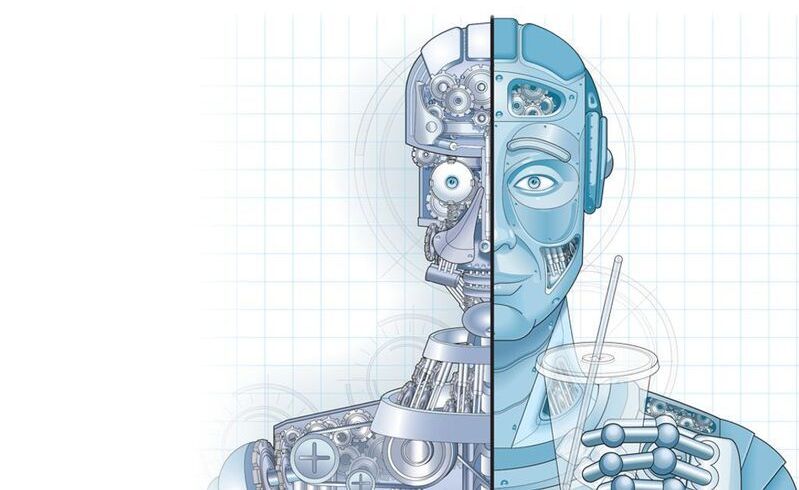The Boise, Idaho-based memory-chip maker says it is earning millions of dollars in extra returns on its deposits thanks to an artificial-intelligence tool developed in house.
French tyre manufacturing giant Michelin, in collaboration with two Swiss inventors, has presented an innovative solution to help decarbonise maritime shipping.
It’s based on GPT-2 and fine-tuned on corresponding 700 texts.
You can generate short or big version of text. All for free.
Safe and readily available water is important for public health, whether it is used for drinking, domestic use, food production, or recreational purposes. Despite the vast quantity of water on Earth, just 2.5% of it is freshwater, and an estimated 785 million people lack a clean source of drinking water. Desalination of seawater could be a vital technology to meet the world’s drinking water needs.
Now, Korean engineers have developed a new desalination technique that takes just minutes to make seawater drinkable. They used a new nanofiber membrane distillation process that could desalinate water with 99.99% efficiency. Engineers believe that commercializing such technology could help humankind cope with the shortage of fresh drinking water in the future.
Amongst the most challenging issues in membrane distillation is membrane wetting that causes the pollution of permeate, reduction in vapor production, and finally, reduction in the performance of the membrane. If a membrane exhibits wetting during membrane distillation operation, the membrane must be replaced.
The Retrobiome, Cancer, And Aging — Roswell Park Comprehensive Cancer CtrThe Retrobiome, Cancer, And Aging — Dr. Andrei Gudkov, PhD, DSci, Roswell Park Comprehensive Cancer Center, joins me on Progress, Potential, And Possibilities Cornell University College of Veterinary Medicine #Cancer #Vaika #Genome #DnaDamage #ImmunoSenescence #Pets #Dogs #Health #Lifespan #LifeExtension #Inflammaging #Longevity #Aging #Oncology
Dr Andrei Gudkov, PhD, DSci, is a preeminent cancer researcher who serves as Senior Vice President, Research Technology and Innovation, Chair of the Department of Cell Stress Biology, and a member of the senior leadership team for National Cancer Institute (NCI) Cancer Center Support Grant at Roswell Park Comprehensive Cancer Center (https://www.roswellpark.org/andrei-gudkov).
Dr. Gudkov is responsible for building on the basic and translational research strengths of the Cell Stress Biology program in DNA damage and repair, photodynamic therapy, thermal and hypoxic stress and immune modulation.
Dr. Gudkov assists the President & CEO in developing and implementing strategic plans for new scientific programs and enhancing collaborations in research programs with regional and national academic centers as well as with industry.
Before joining Roswell Park, Dr. Gudkov served as chair of the Department of Molecular Genetics at Lerner Research Institute, Cleveland Clinic Foundation, and Professor of Biochemistry at Case Western University. He earned his doctoral degree in Experimental Oncology at the Cancer Research Center, USSR and a Doctorate of Science (D.Sci) in Molecular Biology at the Moscow State University, USSR. He has authored or co-authored over 135 scientific articles and holds 27 patents.
After a 48-hour delay as a tropical storm traveled up the coast, a cargo Dragon capsule bid farewell to the International Space Station on Thursday (July 😎.
With help from artificial intelligence and special sensors, next-generation robots will be able to perform tasks ranging from understanding speech in a noisy environment to sniffing out phony wine.
At Stellantis’ EV Day, Jeep detailed a range of wild future tech, including off-road self-driving, vehicle-to-vehicle charging and follow-me drones.
The researchers hypothesized that due to abnormal excitement of the Meynert basal ganglia, SB enters the brain and activates anticholinergic action to suppress abnormal acetylcholine secretion of acetylcholine-memory-related circuits centered on the Meynert basal ganglia, eliminating the flashbacks.
Fortunately, a group of Japanese researchers from the Sogo PTSD Institute, Medical Corporation Sogokai, Japan led by Dr. Masanobu Sogo appear to have made a breakthrough in PTSD treatment.
They have identified a drug called trihexyphenidyl, that can significantly reduce the flashbacks and nightmares experienced by patients with PTSD, according to a study published in Brain and Behavior.
Trihexyphenidyl is a central anticholinergic drug used to manage disorders like parkinsonism, and alleviate several side-effects induced by drugs acting on the central nervous system (CNS). It acts by blocking the activity of a neurotransmitter, acetylcholine, in the CNS. Interestingly, it has been available for therapeutic use for around 66 years.
On July 1, the company announced that it would host its first fully-crewed spaceflight no earlier than Sunday, July 11. The ship will carry two pilots and four mission specialists, most notably company founder Richard Branson.
It’s the company’s 22nd flight with the VSS Unity ship and the fourth crewed space mission. But it’s that “space” clarifier that’s sparked debate — Virgin Galactic’s flights reach an altitude of just over 55 miles, but some organizations claim the boundary of space is actually 62 miles high.
As competitor Blue Origin prepares to launch its own crewed flight later this month, moving past the 62-mile limit, it’s a debate that could dictate who gets bragging rights.









